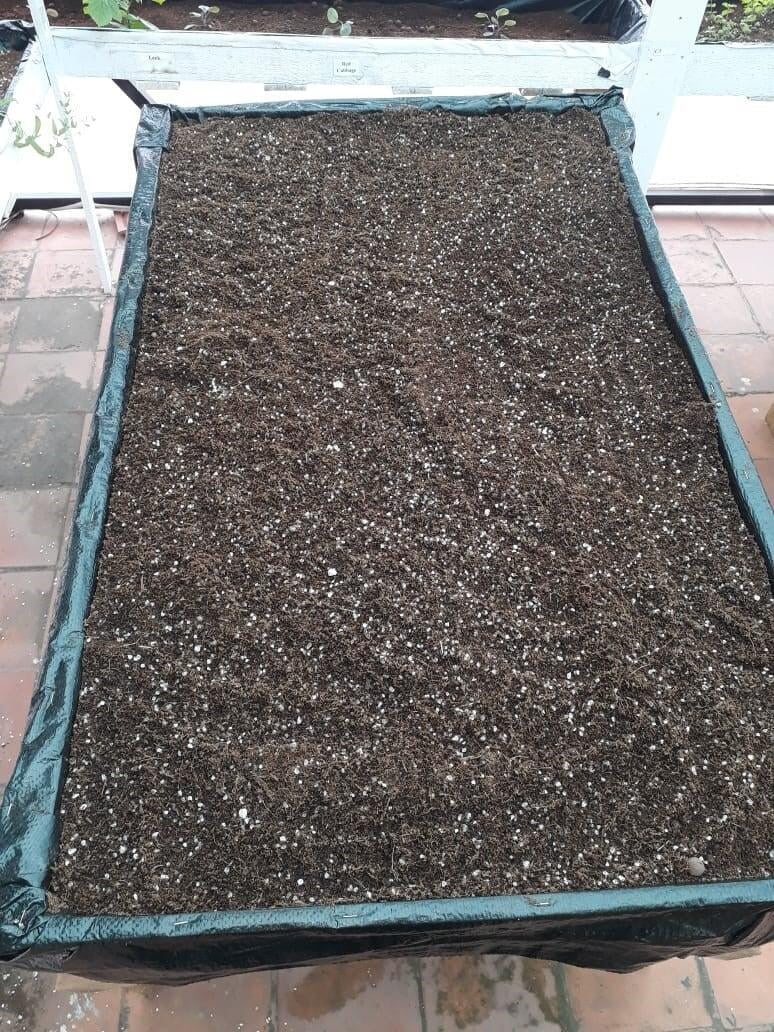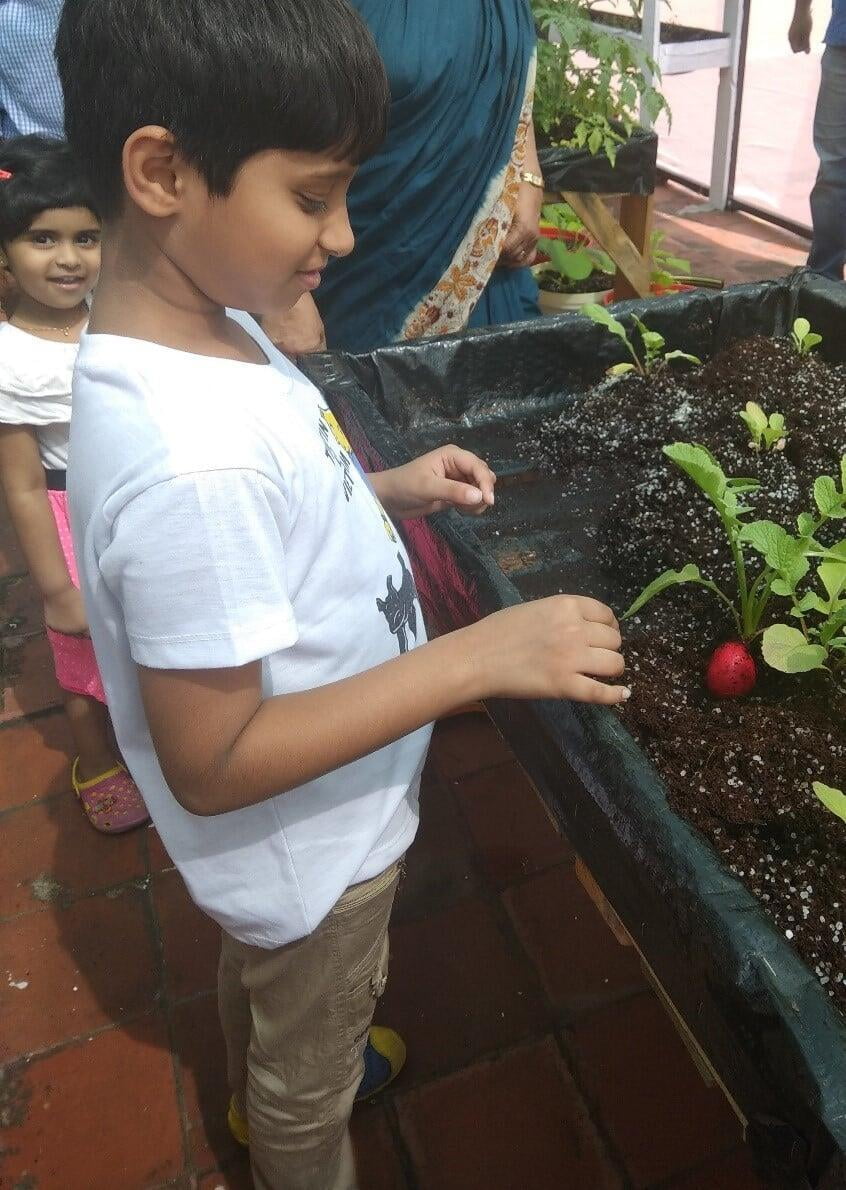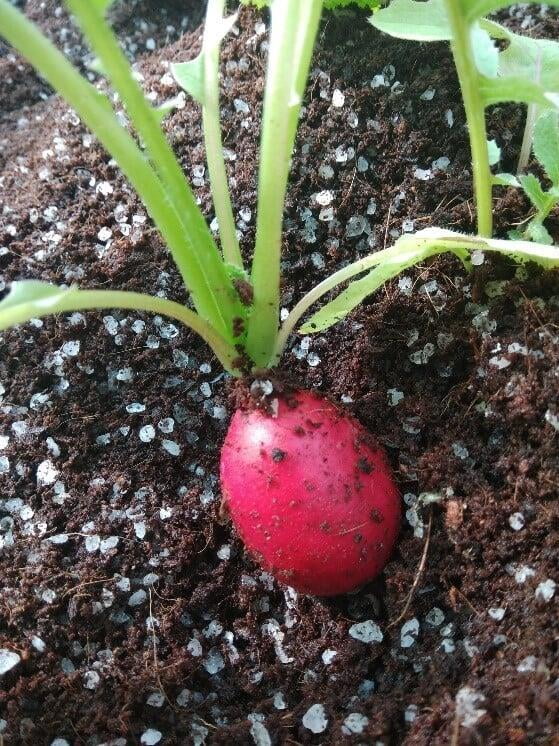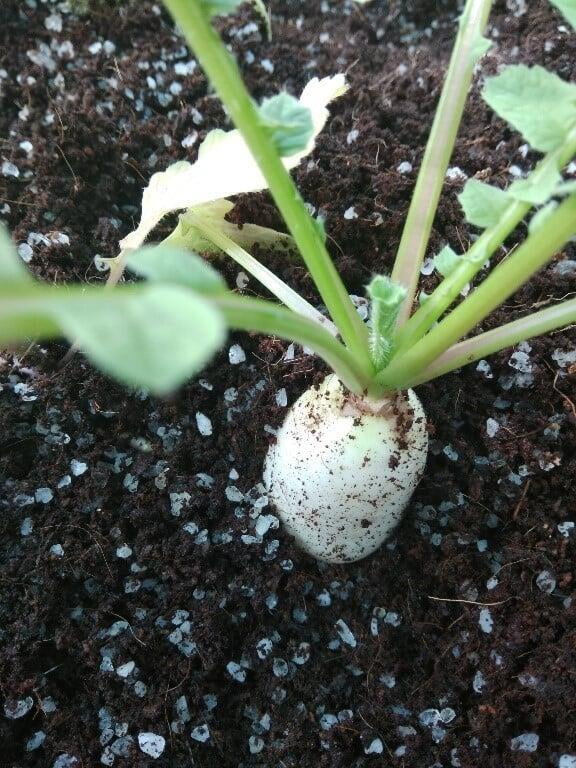The table changing table radish

How did we start?

We got an ergonomically designed wooden table grow-bed made and filled it with the growing media mix of cocopeat and gravel. This gave us an added advantage of height and hence an ergonomic design easy on our back.
For a home user, a bucket, a tub, or any container can work as a grow bed for plants that grow below the soil. You can go with the growing media of your choice. We went for a mix of cocopeat and gravel in a ratio of 80:20. The primary reasons for using cocopeat and gravel as a medium instead of soil were:-
- No need to deal with soil-borne pests
- No need to pluck out weeds that keep growing ever and ever again in the soil
- Cocopeat retains moisture for a long duration so need less frequent watering
- Since cocopeat may get over drenched, adding gravel ensures good spaces and aeration in the root zone
Once the grow-bed is ready, plant the table radish saplings at a spacing of 5-6 inches apart.
Nutrition and Dosage
Since we are growing in cocopeat, which does not have any nutritional content, it is essential to provide external nutrients. We went for our in-house CityGreen's NPK, which works exceptionally well for root vegetables.
Ensure that sufficient nutrition is provided to these plants. Once a day, plain water, and an NPK solution twice a week will help. Initially, the dosage for the same should not be very high. We started with 1 ml each of N, K, and P per liter. Once the plant begins growing, maybe after a couple of weeks, the dosage can be increased to substantially help the plant grow better.
Do ensure to keep a watch to check if the plant is getting sufficient sunlight. Keep a check to spot any pests in the plants. Since our grow bed was in a net house set up, it was not that difficult to keep pests away. But neem oil sprays are a must-have, to tackle pest problems.
"The greatest thrill of growing something like a table radish in cocopeat is the joy of moving the cocopeat aside and viewing the radish. You can touch it too, and that's a very thrilling feeling."


